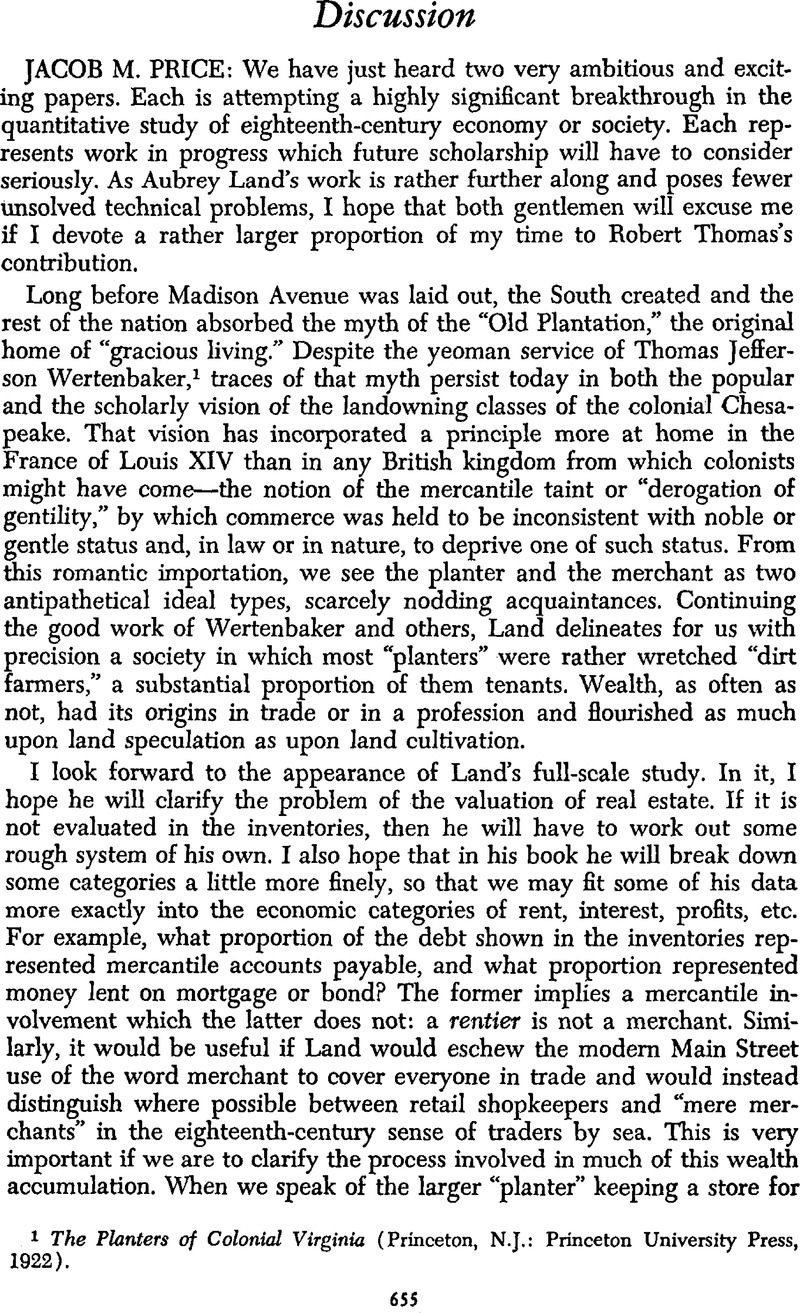No CrossRef data available.
Published online by Cambridge University Press: 03 February 2011

1 The Planters of Colonial Virginia (Princeton, N.J.: Princeton University Press, 1922)Google Scholar.
2 Galloway mss., Library of Congress.
3 Mitchell, B. R. and Deane, Phyllis, Abstract of British Historical Statistics (Cambridge [Engl.]: The University Press, 1962), pp. 94–95Google Scholar.
4 Cf: James, Francis G., “Irish Colonial Trade in the Eighteenth Century,” William and Mary Quarterly, 3d ser., XX (Oct. 1963), 575–84Google Scholar.
5 Davis, Ralph, The Rise of the English Shipping Industry in the Seventeenth and Eighteenth Centuries (London: Macmillan; New York: St. Martin's, 1962), pp. 68, 374–76Google Scholar. A spot check in the Naval Officers' accounts shows that of the 175 vessels carrying tobacco from Virginia to Britain (mostly one- to two-hundred tons) in the year April 5, 1771, to April 5, 1772, there were 114 colonial-built vessels; but of these, 82 had acquired British registry. PRO C. O. 5/1349, 1350.
6 Cf. Homer, John, The Linen Trade of Europe during the Spinningwheel Period (Belfast: M'Caw, Stevenson, 1920), pp. 201–4Google Scholar; Hamilton, Henry, An Economic History of Scotland in the Eighteenth Century (Oxford: The University Press, 1963), pp. 410–11Google Scholar; Davis, Ralph, “English Foreign Trade, 1700–1774,” Economic History Review, 2d ser., XV (1962), 302Google Scholar.
7 Fishlow, Albert, “Discussion,” Journal of Economic History, XXIV (Dec. 1964), 564–65Google Scholar.
8 The present writer published an expanded version of the Posthumus price series for tobacco in his Tobacco Adventure to Russia (Part I of n. s. Vol. LI, Transactions of the American Philosophical Society [Philadelphia: A. Ph. S., 1961]), p. 103. In it, he also used unweighted averages to make his new data consistent with those of Posthumus. It can be argued that Posthumus' method would not affect the type of calculation attempted in the Fishlow-Thomas method, inasmuch as the alleged “distortion” would be a constant percentage over time. This would have to be proved empirically.
9 Fortunately not relevant here is the difference between the Amsterdam and the English pound weight. One hundred Amsterdam pounds equaled 109 lb. 8 oz. in Britain or Ireland. William Gordon, The Universal Accountant and Complete Merchant (two vols.; Edinburgh, 1770), facing p. 398.
10 The only quantitative data available on the Dutch side are for 1753. van Nierop, Leonie, “Uit de bakermat der Amsterdamsche Handelsstatistiek,” Jaarboek van het genootschap Amstelodamum, XV (1917), 91–92Google Scholar. However, after ca. 1725, Rotterdam was a more important tobacco market than Amsterdam.
11 American State Papers, VII, Commerce and Navigation, I (Washington, 1832), pp. 32–33Google Scholar.